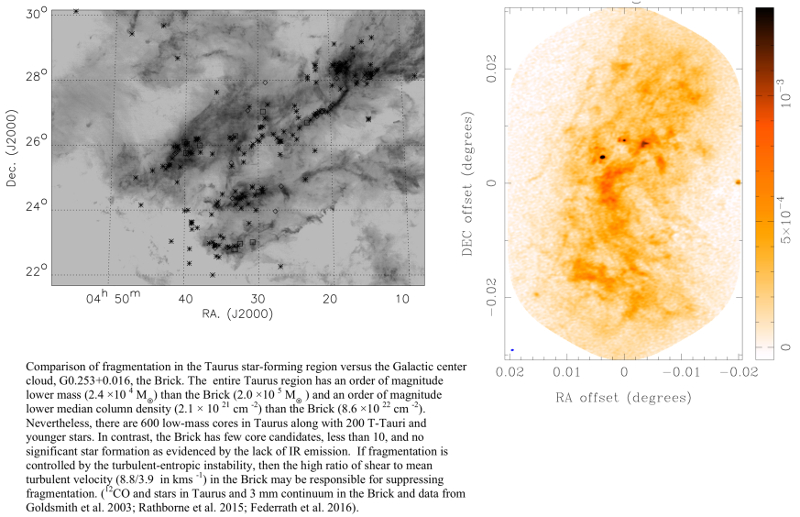| EPoS Contribution |
|
A Turbulent-Entropic Instability and the Fragmentation of Star-Forming Clouds
Eric Keto Harvard U, Cambridge, MA, US | |
| The kinetic energy of supersonic turbulence within interstellar clouds is subject to cooling by dissipation in shocks and subsequent line radiation. The clouds are therefore susceptible to a condensation process controlled by the specific entropy. In a form analogous to the thermodynamic entropy, the entropy for supersonic turbulence is proportional to the log of the product of the mean turbulent velocity and the size scale. We derive a dispersion relation for the growth of entropic instabilities in a spherical self-gravitating cloud and find that there is a critical maximum dissipation time scale, about equal to the crossing time, that allows for fragmentation and subsequent star formation. However, the time scale for the loss of turbulent energy may be shorter or longer, for example with rapid thermal cooling or the injection of mechanical energy. Differences in the time scale for energy loss in different star-forming regions may result in differences in the outcome, for example, in the initial mass function. The formation of low-mass stars in Taurus and high-mass stars in the Galactic Center may be the result of rapid and slow fragmentation, respectively. The differnce may be due to the high shear rates in the Central Molecular Zone that resupply the turbulent energy in the Galactic center clouds. | |
 | |
| Caption: Comparison of fragmentation in the Taurus star-forming region versus the Galactic center cloud, G0.253+0.016, the Brick. | |
| Collaborators: G. Field, Harvard U, US E. Blackman, U Rochester, US |
Key publication
Suggested Session: Turbulence |

